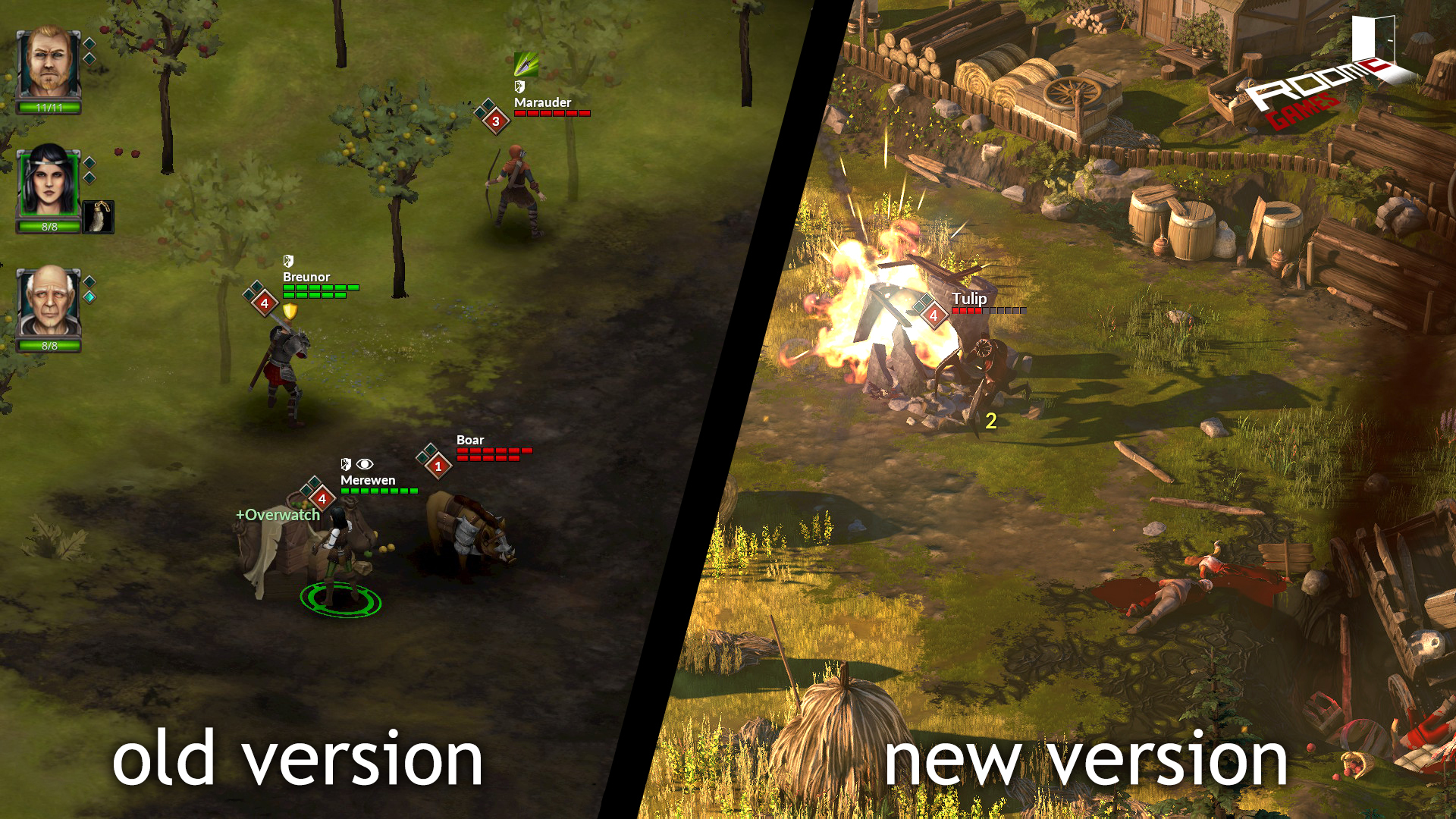
Jan 22, 2020
The Hand of Merlin - MarkoP
Hey everyone!
As promised last week, this week we’ll share some details about the game, how it all started, and introduce the project leads of the project.
Robert and Karlo were both working in Croteam when they decided they wanted to make a small prototype of a game in their free time. They were inspired by The Banner Saga and FTL, and wanted to try combining some aspects of those games into one. Since both had experience with building engines, they built a small engine for a 2D prototype game. Slowly, over time, the prototype grew to something with potential, and they got the green light to hire some people to work on the game full time in the same office: a programmer and a few artists. The prototype had all of the core features that are still present today, albeit in a different form and implementation.
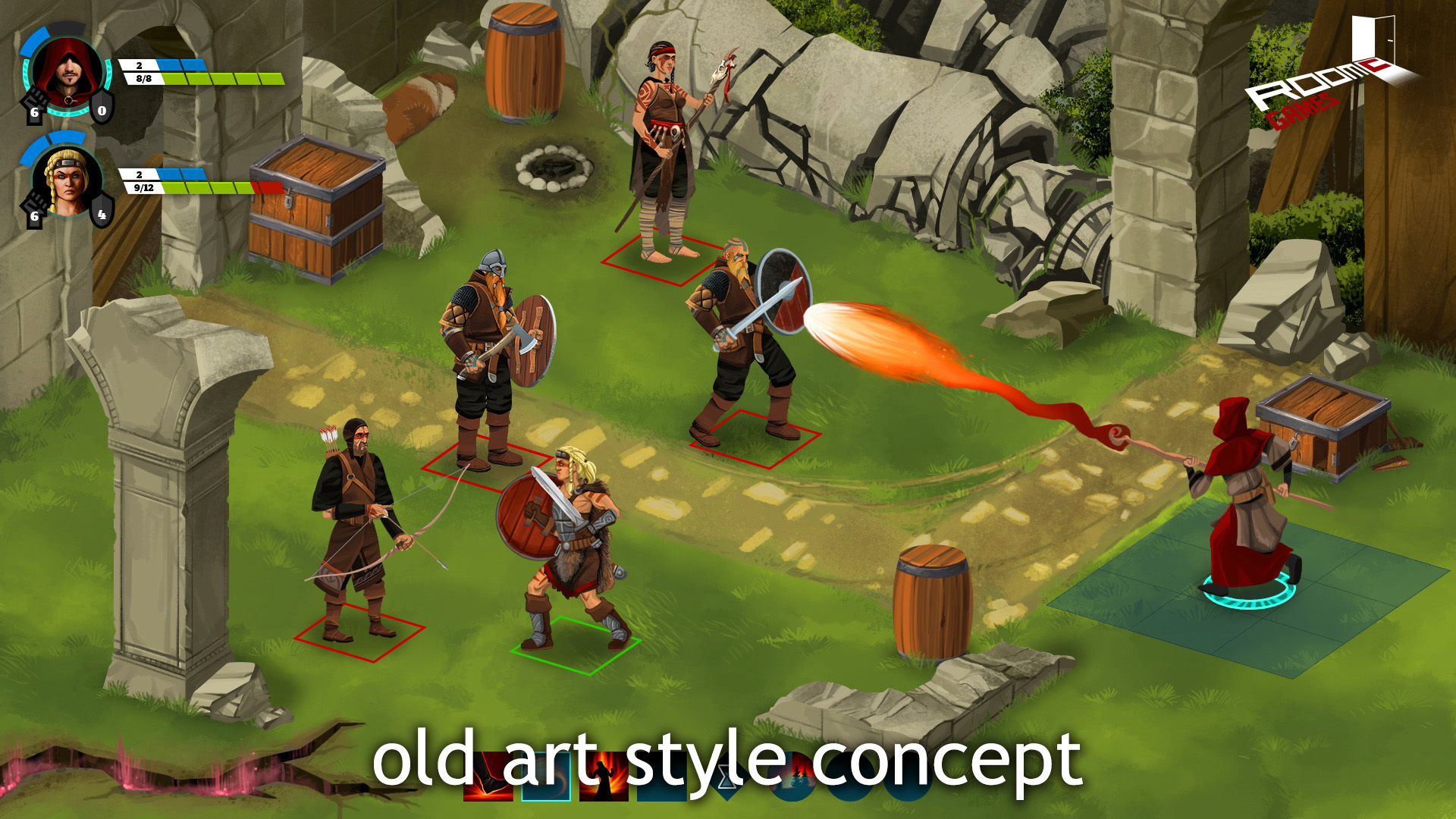
As time passed, some basic issues were found. The game has isometric perspective with a fixed camera, and we wanted units that had full rotational animations. Only the units were expected to be able to rotate so their backs were visible, so they were the only assets planned to be fully animated (the environment objects were animated, but didn’t require full 360 rotations drawn). Once we measured how fast we could create a single, fully animated unit, we realized this required too much time (5 animations minimum per unit for each of the 4 directions in a tile based game, with 10 units planned as a baseline), and as we had only one animator, the decision was made to move all units to 3D. Most environments were still done as 2D sprites, and the team had little experience with creating 3D assets, so we hired a 3D artist to help out with the units. Having 3D units would reduce the strain for creating the same animation 4 times per unit, since all we had to do was create the animations once, and simply rotate the unit to face a different direction, so the cost of having to create the few units from scratch was worth it.
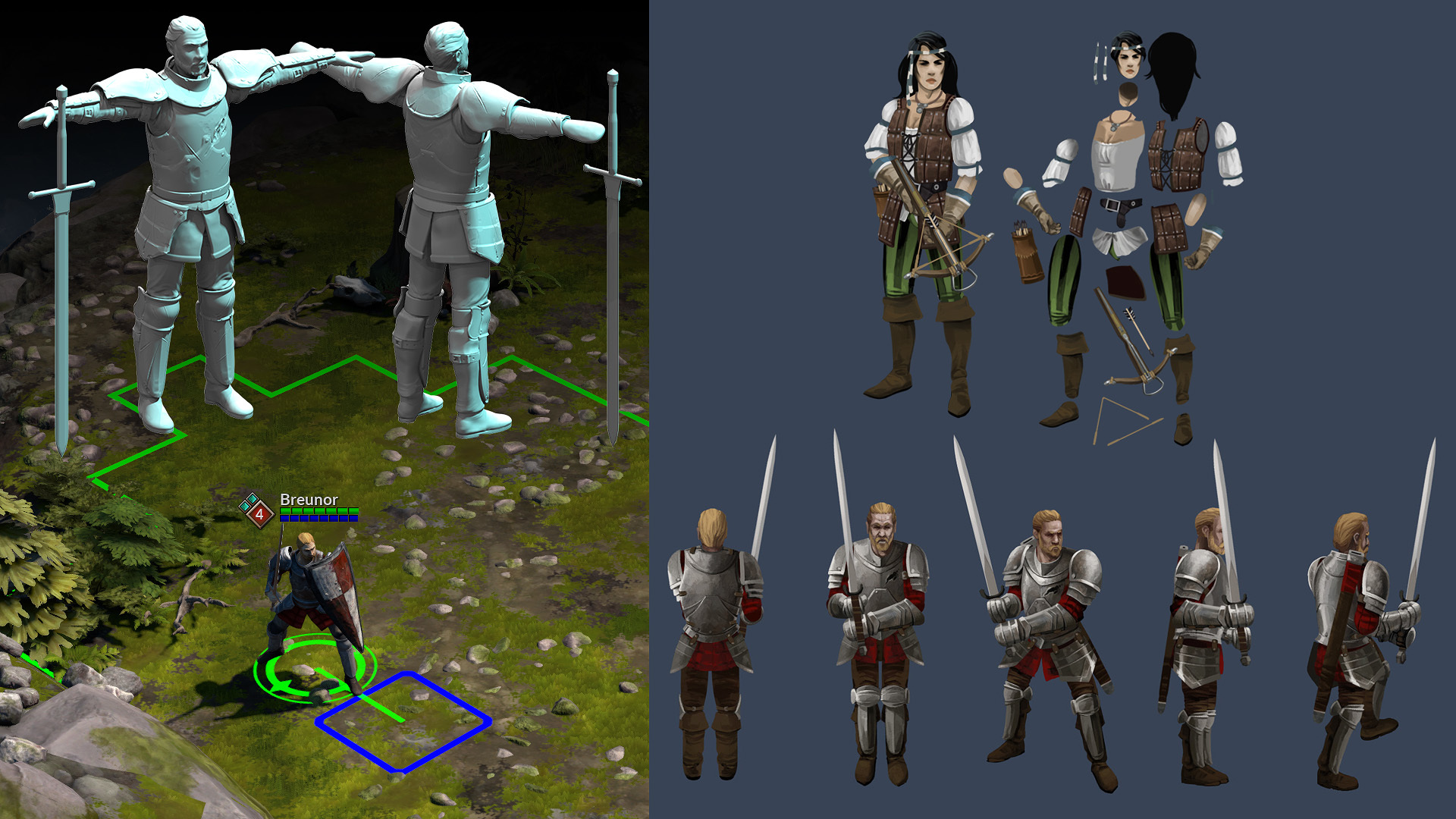
More time passed by, and we played around with a gameplay concept of having high ground in the terrain where ranged units would get some benefit (accuracy and/or damage). This was around the time when the team was offered the chance to move the game to Serious Engine, which would allow us to use the rendering capabilities it already had, and the options to release on multiple platforms, which our small engine just didn’t have, and would require much more time to implement. Since we wanted to have a good rendering pipeline to make the dark fantasy vision of the game, we decided to make that move. We just had to rewrite the entire game logic again, and make all of our assets again. Yay.
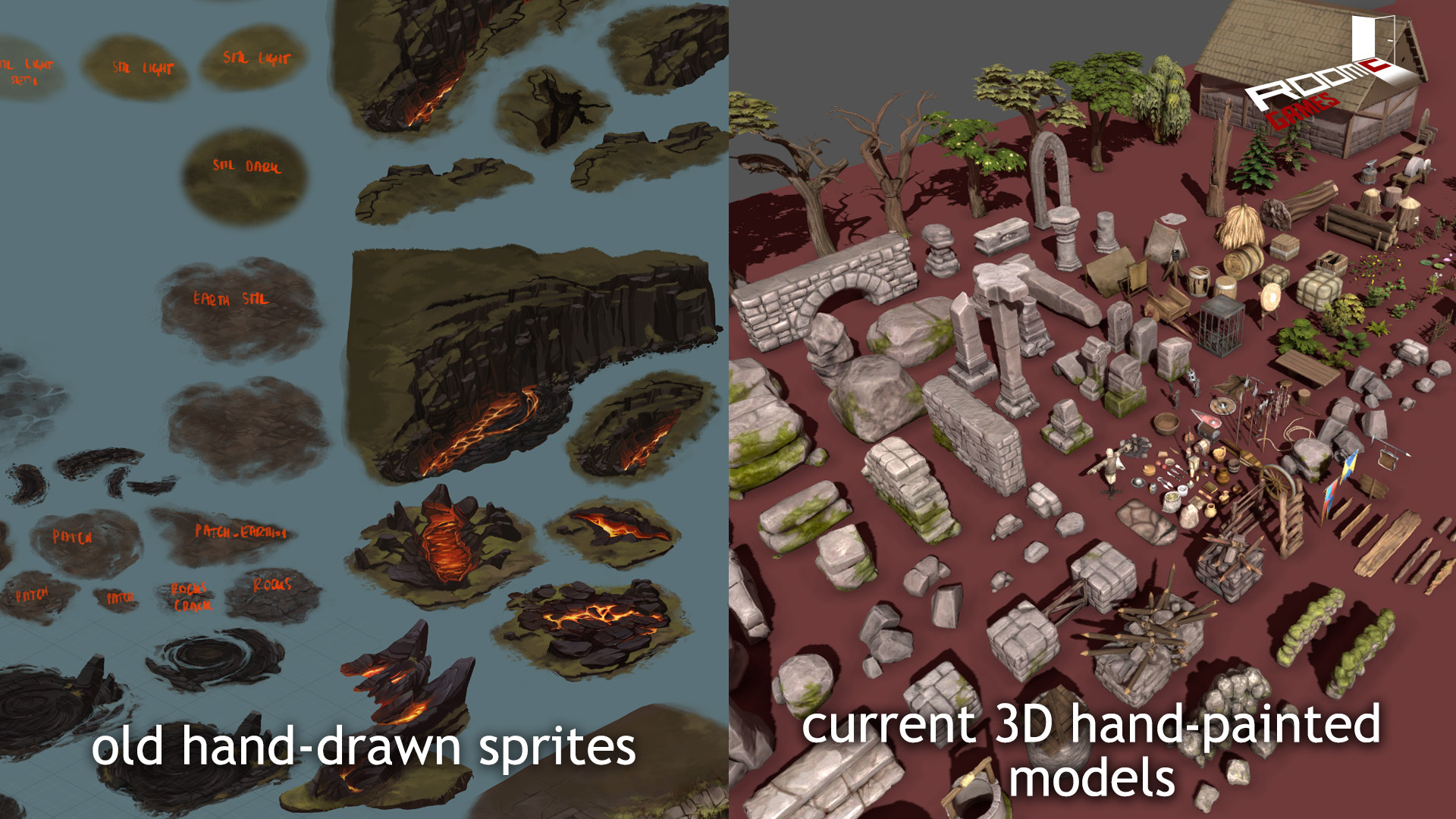
This time, armed with knowledge of making 3D assets (as our artists learned the ropes of 3D, even though they were originally 2D artists), we decided to create every object as a full 3D model, as our old 2D sprites just wouldn’t look good enough in the new engine. So, over time, we made a lot of assets, hired a few more people, and were done with porting the gameplay to the new engine. Creating an isometric, tile based, turn-based, tactical game in an engine not created for this task was not easy, but we did our best, and people at Croteam were amazed of what we did with their engine - they almost couldn’t recognize this was the engine they were using to make their first person games. The praise gave us confidence we were doing something right.
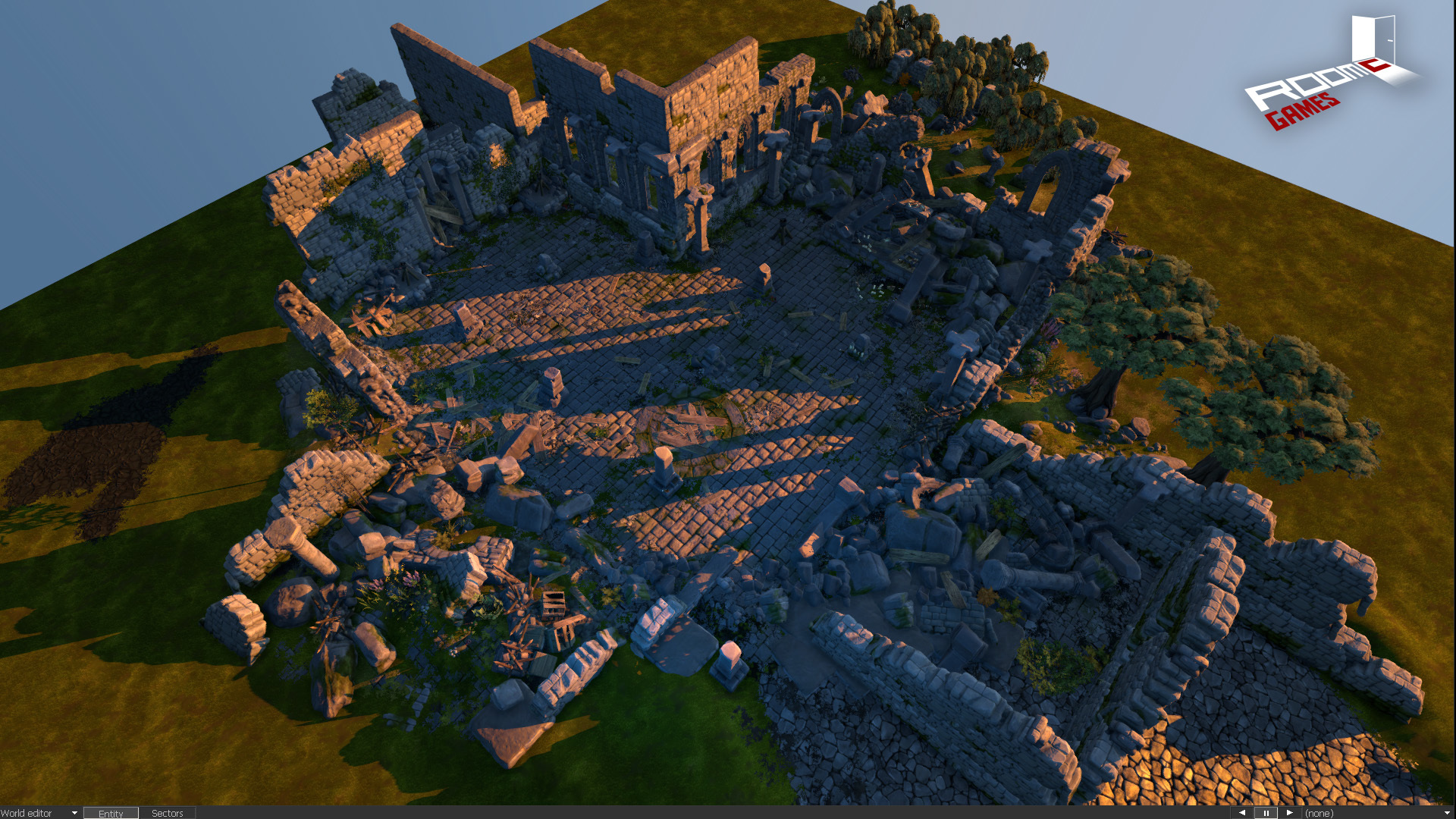
Robert and Karlo, as our overlords founders, don’t have much time to work on the game itself anymore, as they used to. They planted the vision of the game, which the team has taken and grown into the game we have today. They offer us technical knowledge about the Serious Engine (after all, they have 10+ years of experience with it, and we have 1.5), and help us with design when we need additional eyes on the problems at hand.
To expand on some of the tidbits we’ve mentioned in the post, the game is low fantasy themed, sort of an answer to the question of “what would happen if the xenomorphs from Alien came to Earth in medieval times”. Our vision is the image of a knight charging with his sword against an alien threat. It has an overworld part with encounters akin to FTL, and the combat shifts to an XCOM style turn based view on relatively small maps.
Next week, we’ll introduce the first region of the game, and one of our artists who worked on it, so stay tuned! You can also join our Discord server for The Hand of Merlin.
MarkoP
As promised last week, this week we’ll share some details about the game, how it all started, and introduce the project leads of the project.
Robert and Karlo were both working in Croteam when they decided they wanted to make a small prototype of a game in their free time. They were inspired by The Banner Saga and FTL, and wanted to try combining some aspects of those games into one. Since both had experience with building engines, they built a small engine for a 2D prototype game. Slowly, over time, the prototype grew to something with potential, and they got the green light to hire some people to work on the game full time in the same office: a programmer and a few artists. The prototype had all of the core features that are still present today, albeit in a different form and implementation.

As time passed, some basic issues were found. The game has isometric perspective with a fixed camera, and we wanted units that had full rotational animations. Only the units were expected to be able to rotate so their backs were visible, so they were the only assets planned to be fully animated (the environment objects were animated, but didn’t require full 360 rotations drawn). Once we measured how fast we could create a single, fully animated unit, we realized this required too much time (5 animations minimum per unit for each of the 4 directions in a tile based game, with 10 units planned as a baseline), and as we had only one animator, the decision was made to move all units to 3D. Most environments were still done as 2D sprites, and the team had little experience with creating 3D assets, so we hired a 3D artist to help out with the units. Having 3D units would reduce the strain for creating the same animation 4 times per unit, since all we had to do was create the animations once, and simply rotate the unit to face a different direction, so the cost of having to create the few units from scratch was worth it.

More time passed by, and we played around with a gameplay concept of having high ground in the terrain where ranged units would get some benefit (accuracy and/or damage). This was around the time when the team was offered the chance to move the game to Serious Engine, which would allow us to use the rendering capabilities it already had, and the options to release on multiple platforms, which our small engine just didn’t have, and would require much more time to implement. Since we wanted to have a good rendering pipeline to make the dark fantasy vision of the game, we decided to make that move. We just had to rewrite the entire game logic again, and make all of our assets again. Yay.

This time, armed with knowledge of making 3D assets (as our artists learned the ropes of 3D, even though they were originally 2D artists), we decided to create every object as a full 3D model, as our old 2D sprites just wouldn’t look good enough in the new engine. So, over time, we made a lot of assets, hired a few more people, and were done with porting the gameplay to the new engine. Creating an isometric, tile based, turn-based, tactical game in an engine not created for this task was not easy, but we did our best, and people at Croteam were amazed of what we did with their engine - they almost couldn’t recognize this was the engine they were using to make their first person games. The praise gave us confidence we were doing something right.

Robert and Karlo, as our overlords founders, don’t have much time to work on the game itself anymore, as they used to. They planted the vision of the game, which the team has taken and grown into the game we have today. They offer us technical knowledge about the Serious Engine (after all, they have 10+ years of experience with it, and we have 1.5), and help us with design when we need additional eyes on the problems at hand.
To expand on some of the tidbits we’ve mentioned in the post, the game is low fantasy themed, sort of an answer to the question of “what would happen if the xenomorphs from Alien came to Earth in medieval times”. Our vision is the image of a knight charging with his sword against an alien threat. It has an overworld part with encounters akin to FTL, and the combat shifts to an XCOM style turn based view on relatively small maps.
Next week, we’ll introduce the first region of the game, and one of our artists who worked on it, so stay tuned! You can also join our Discord server for The Hand of Merlin.
MarkoP




